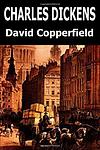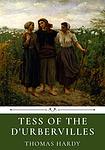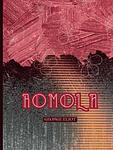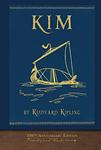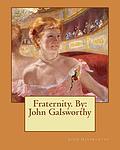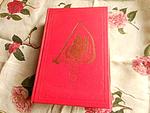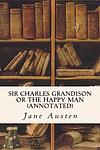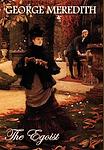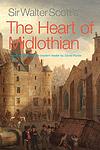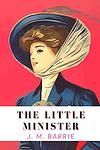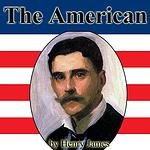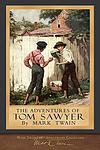Famous Authors Name Their Favorite Novels(from 1915)
This is one of the 284 lists we use to generate our main The Greatest Books list.
-
Vanity Fair by William Makepeace Thackeray
This classic novel follows the lives of two contrasting women, the cunning and ruthless Becky Sharp and the sweet and naive Amelia Sedley, against the backdrop of English society during the Napoleonic Wars. The book is a satirical exploration of the obsession with wealth, status, and social climbing, and the moral bankruptcy that can result from such pursuits. The narrative weaves an intricate tale of love, betrayal, and redemption, exposing the vanity and hypocrisy of high society.
-
David Copperfield by Charles Dickens
This novel follows the life of its titular protagonist from his childhood to maturity. Born to a young widow, David endures a difficult childhood when his mother remarries a harsh and abusive man. After his mother's death, he is sent to a boarding school before being forced into child labor. As he grows, David experiences hardship, love, and loss, all the while meeting a colorful array of characters. The novel is a journey of self-discovery and personal growth, showcasing the harsh realities of 19th-century England.
-
Robinson Crusoe by Daniel Defoe
The book is a classic adventure novel about a man who spends 28 years on a remote tropical island near Trinidad, encountering cannibals, captives, and mutineers before being rescued. The story is noted for its realistic portrayal of the protagonist's physical and psychological development and for its detailed depiction of his attempts to create a life for himself in the wilderness. The novel has been interpreted as an allegory for the development of civilization, as well as a critique of European colonialism.
-
The Scarlet Letter by Nathaniel Hawthorne
Set in 17th-century Puritan Boston, this novel tells the story of a woman who conceives a daughter through an affair and struggles to create a new life of repentance and dignity. She is forced to wear a scarlet "A" on her dress as a sign of her adultery while her lover, a revered local minister, remains unnamed and unpunished. Throughout the book, themes of sin, legalism, and guilt are explored.
-
Tom Jones by Henry Fielding
This classic novel tells the story of Tom Jones, a charming and good-hearted but impulsive young man, who is expelled from his adoptive family home due to his wild behavior and love for the beautiful Sophia Western. His journey through 18th-century England is filled with adventures, misadventures, and a colorful cast of characters, as he struggles with his identity and seeks redemption. The narrative explores themes of class, virtue, and morality, and is known for its humor, social satire, and vivid characterization.
-
Tess of the d'Urbervilles by Thomas Hardy
This is a tragic tale of a young woman named Tess who comes from a poor family in rural England. Tess is sent to work for a wealthy family, where she is seduced by a man who abandons her after she becomes pregnant. The baby dies, and Tess is ostracized by her community. She falls in love with a kind man, but when she confesses her past, he rejects her. Desperate and heartbroken, Tess murders her former seducer and is eventually captured and executed. The novel explores themes of fate, injustice, and the oppressive sexual morals of its time.
-
The History Of Henry Esmond by William Makepeace Thackeray
The novel is a historical fiction set in the late 17th and early 18th centuries, chronicling the life of its protagonist, an officer in the English army. Born to uncertain parentage, he is raised by a noble family and develops a deep affection for his benefactors' daughter. The narrative follows his experiences in the military, his travels abroad, and his involvement in the political and religious conflicts of the era, including the Jacobite Rebellion. Throughout his life, he grapples with questions of honor, love, and identity, against the backdrop of the shifting fortunes of the British monarchy and the complexities of the society in which he lives.
-
Ivanhoe by Walter Scott
Set in 12th-century England, the novel follows the story of Wilfred of Ivanhoe, a young Saxon knight, returning from the Crusades. He is disowned by his father for his allegiance to the Norman king Richard the Lionheart. The narrative encompasses themes of chivalry, rivalry, and the struggle between Saxons and Normans, while also highlighting the tension between Jews and Christians. The tale is known for its action-filled tournaments, sieges, and the character of Rebecca, a virtuous and strong Jewish woman.
-
Romola by George Eliot
Set against the backdrop of the Italian Renaissance in 15th-century Florence, this novel weaves the tale of a young and noble woman who navigates the complexities of her life amidst political and personal turmoil. As she grapples with the moral decay of her husband and the societal expectations placed upon her, she embarks on a journey of self-discovery and intellectual awakening. Through her trials and tribulations, the protagonist emerges as a figure of resilience and virtue, embodying the ideals of enlightenment and personal growth. The narrative not only explores themes of love, betrayal, and redemption but also delves into the historical and cultural milieu of Renaissance Italy, offering a rich tapestry of the period's art, politics, and philosophy.
-
Kim by Rudyard Kipling
"Kim" is a thrilling adventure set in India during the height of the British empire. The story follows the life of a young Irish orphan, Kimball O'Hara, who grows up on the streets of Lahore. Kim's life takes a dramatic turn when he becomes involved in the 'Great Game', the political conflict between Russia and Britain in Central Asia. Guided by an old Tibetan Lama on a spiritual quest, Kim is recruited by the British secret service and sent on a dangerous mission across the Himalayas. The novel explores themes of identity, imperialism, and East vs. West.
-
The Portrait of a Lady by Henry James
This classic novel explores the life of a young, independent American woman who inherits a large amount of money and moves to Europe, where she falls into a manipulative and oppressive marriage. The story delves into themes of personal freedom, responsibility, and betrayal, as the protagonist navigates the complexities of high society, love, and the consequences of her choices.
-
Adam Bede by George Eliot
"Adam Bede" is a 19th-century novel set in rural England that explores the themes of love, betrayal, and moral responsibility. The story revolves around a hardworking carpenter, Adam Bede, who is in love with a vain but beautiful dairymaid, Hetty Sorrel. However, Hetty is seduced by a young, thoughtless squire, Arthur Donnithorne, which leads to her becoming pregnant. When Arthur abandons her, Hetty leaves her baby in the woods, where it dies, and she is subsequently charged with infanticide. Adam, devastated by Hetty's actions, finds solace and eventually love with a devout Methodist preacher, Dinah Morris. The novel ends with Adam and Dinah marrying, finding happiness after the tragedy.
-
Clarissa by Samuel Richardson
The novel revolves around the beautiful and virtuous Clarissa Harlowe, a young woman from a wealthy family who is pursued by the villainous Robert Lovelace. Despite her attempts to maintain her virtue and independence, she is tricked into running away with Lovelace and is subsequently held against her will. Lovelace's relentless pursuit and Clarissa's steadfast resistance culminate in her tragic end, making the novel a complex exploration of power, morality, and the vulnerability of women in society.
-
Fraternity by John Galsworthy
This narrative delves into the complexities of early 20th-century English society, exploring themes of social inequality, love, and the intricate dynamics within a bourgeois family. Set against the backdrop of London, it juxtaposes the lives of the wealthy and the impoverished, focusing on the interactions between members of an affluent family and their contrasting attitudes towards the less fortunate. The story critically examines the moral and ethical dilemmas faced by the characters, highlighting the tension between personal desires and societal expectations. Through its detailed portrayal of family relationships and social issues, the novel offers a poignant critique of the class disparities and social injustices of its time.
-
Handley Cross by R. S. Surtees
This novel is a vibrant and humorous exploration of English fox hunting, centered around the colorful character Mr. Jorrocks, a grocer turned Master of Foxhounds. Set in the fictional rural community of Handley Cross, the story delves into the adventures, misadventures, and social satire of hunting life in the 19th century. Through a series of comedic events, the protagonist navigates the complexities of rural society, showcasing the author's keen eye for detail and penchant for the eccentricities of English country life. The narrative is rich with dialect, character studies, and the customs of the hunt, offering a lively and engaging portrayal of a bygone era.
-
The History of Mr. Polly by H. G. Wells
"The History of Mr. Polly" is a comedic novel that tells the story of Alfred Polly, a man dissatisfied with his life and marriage. After faking his death in a fire, he leaves his wife and shop behind to start a new life. He eventually finds peace and contentment working as an assistant to a man who runs a country inn. The book explores themes of self-discovery, the struggle against societal expectations, and the pursuit of happiness.
-
Jane Eyre by Charlotte Bronte
The novel follows the life of Jane Eyre, an orphan who is mistreated by her relatives and sent to a charity school. As she grows up, Jane becomes a governess at Thornfield Hall, where she falls in love with the brooding and mysterious Mr. Rochester. However, she soon learns of a dark secret in his past that threatens their future together. The story is a profound exploration of a woman's self-discovery and her struggle for independence and love in a rigid Victorian society.
-
Jude the Obscure by Thomas Hardy
This novel tells the story of Jude Fawley, a working-class young man who dreams of becoming a scholar. The traditional class structure in 19th-century England prevents him from realizing his dream and his only solace is his love for his cousin, Sue Bridehead. Their scandalous relationship and the tragic events that follow form the heart of the narrative, which explores themes of love, class, religion, and morality.
-
Lavengro by George Borrow
This novel is a semi-autobiographical narrative that blends fact with fiction, exploring the life and adventures of a young man who travels through early 19th-century Britain. The protagonist, a scholar, linguist, and former lawyer's apprentice, delves into the world of the Romany Gypsies, learning their language and customs while reflecting on nature, society, and the human condition. His encounters with a diverse cast of characters, including horse traders, boxers, and thieves, provide a vivid portrayal of the period's cultural landscape. The narrative is as much an exploration of the author's personal philosophy and love for languages as it is a depiction of the life of an itinerant wanderer.
-
Lorna Doone by R. D. Blackmore
Set in the 17th century in the Exmoor region of England, the novel is a romantic adventure centered around John Ridd, a farmer who falls in love with Lorna Doone, a beautiful girl from a notorious family of outlaws. Their star-crossed relationship faces numerous obstacles, including social class differences, family feuds, and the violent history between the Doones and the Ridds. As John strives to rescue Lorna from her family's criminal clutches and the machinations of a villainous nobleman, the story unfolds with themes of justice, revenge, and the power of love to overcome adversity.
-
Middlemarch by George Eliot
Set in the fictitious English town of Middlemarch during the early 19th century, the novel explores the complex web of relationships in a close-knit society. It follows the lives of several characters, primarily Dorothea Brooke, a young woman of idealistic fervor, and Tertius Lydgate, an ambitious young doctor, who both grapple with societal expectations, personal desires, and moral dilemmas. Their stories intertwine with a rich tapestry of other townsfolk, reflecting themes of love, marriage, ambition, and reform, making a profound commentary on the human condition.
-
Nicholas Nickleby by Charles Dickens
The story follows Nicholas Nickleby, a young man who becomes the head of his family after his father's death. He and his family are left penniless by an unscrupulous uncle, who also sends Nicholas to work in a cruel and abusive boarding school. Nicholas eventually escapes, travels the country, meets a variety of eccentric characters, and has many adventures. Throughout his journey, Nicholas struggles against adversity and the greed and cruelty of others, while aiming to protect his sister and mother. The novel is a social critique, highlighting the terrible conditions of schools and the plight of the poor in 19th-century England.
-
The Pickwick Papers by Charles Dickens
The book is a humorous and satirical depiction of English society in the 19th century, told through the travels and adventures of a group of gentlemen from London, led by a kind-hearted and naive man. Their escapades take them to various locales where they encounter a plethora of eccentric characters and find themselves in comical and sometimes absurd situations. The narrative is interspersed with tales and anecdotes told by the characters themselves, adding to the richness and diversity of the overall story.
-
The Return of the Native by Thomas Hardy
This classic novel is set in the rustic rural backdrop of Egdon Heath and revolves around the life of Clym Yeobright, a successful diamond merchant who returns to his native land from Paris. His return sparks a chain of events involving love, ambition, betrayal, and tragedy. His love interest, Eustacia Vye, dreams of escaping the monotonous rural life, while his mother disapproves of their relationship. The novel explores the themes of love, fate, chance, and the clash between individuals' aspirations and societal expectations.
-
Sir Charles Grandison by Samuel Richardson
The novel revolves around the character of Sir Charles Grandison, an ideal English gentleman who navigates the complexities of social expectations and personal virtue. He is admired for his integrity, benevolence, and sense of honor, qualities that make him the object of affection for several women. The story unfolds through a series of letters, primarily between the virtuous Harriet Byron, who falls in love with Sir Charles, and her correspondents. The narrative explores themes of morality, marriage, and the roles of men and women in 18th-century society, as characters grapple with their emotions and the challenges posed by family obligations, romantic rivalries, and societal pressures.
-
Sons and Lovers by D. H. Lawrence
"Sons and Lovers" is a semi-autobiographical novel that explores the complex relationships between a miner's wife, her husband, and their two sons. The story focuses on the intense emotional and psychological bonds between the mother and her sons, as well as the struggles they face in their romantic relationships due to their deep attachment to their mother. The novel delves into themes of class, love, sexuality, and the oedipal complex, presenting a vivid picture of working-class life in early 20th century England.
-
The Story Of An African Farm by Olive Schreiner
The book is a pioneering work in feminist literature, set in the harsh and arid South African veld in the late 19th century. It follows the lives of two English children, Lyndall and Waldo, who live on a farm and grapple with the constraints of their isolated environment. The narrative explores themes of gender, race, and colonialism, as the characters confront the societal expectations and limitations placed upon them. Through their struggles and relationships, the story delves into existential questions and the search for personal freedom, challenging the traditional roles and beliefs of the time.
-
The Awakening Of Helena Ritchie by Margaret Deland
This novel delves into the life of Helena Ritchie, a woman seeking redemption and a new beginning in the small town of Old Chester after a troubled past in Philadelphia. Set in the late 19th century, the story explores themes of societal expectations, personal transformation, and the quest for identity. Helena's journey is marked by her struggle to break free from her past mistakes and the rigid social norms of the time, seeking solace and purpose through her relationships and interactions with the townsfolk. As she navigates her new life, the narrative poignantly addresses the complexities of love, morality, and the possibility of rebirth through the lens of a woman's experience in a changing American society.
-
The Egoist by George Meredith
The novel is a satirical portrayal of Victorian society and its marriage customs, focusing on the story of a self-absorbed, wealthy gentleman who is blind to his own egotism and the effects it has on those around him. His misguided attempts at courtship and his inability to understand the needs and feelings of others, particularly the intelligent and independent woman he wishes to marry, lead to a series of comedic and dramatic misunderstandings. The narrative delves into themes of love, self-knowledge, and the struggle for personal freedom, all while critiquing the social norms and gender roles of the time.
-
The Heart Of Midlothian by Sir Walter Scott
The novel is a historical tale set in 18th-century Scotland, revolving around Jeanie Deans, a young woman of strong moral character, who embarks on a daunting journey from Edinburgh to London to seek a royal pardon for her wrongfully accused sister, Effie, who faces execution. Along the way, Jeanie encounters various characters from different strata of society, confronting issues of justice, morality, and national identity. Her steadfast loyalty and unwavering principles highlight the cultural and social tensions of the time, as the narrative intertwines personal drama with broader historical events, including the Porteous Riots and the influence of the Scottish Reformation.
-
The Little Minister by J. M. Barrie
Set in a small Scottish weaving town in the 19th century, this novel tells the story of Gavin Dishart, a young and idealistic minister, who becomes embroiled in a tumultuous relationship with Babbie, a mysterious and spirited gypsy girl. Their unlikely romance, fraught with social disparities and moral dilemmas, challenges the rigid conventions of the time and tests Gavin's faith and principles. As the story unfolds, the characters navigate through a series of misunderstandings, societal pressures, and personal growth, ultimately exploring themes of love, duty, and the complexity of human nature.
-
The Old Wives' Tale by Arnold Bennett
This novel explores the lives of two sisters, Constance and Sophia Baines, who are brought up in a small town drapery shop in the mid-19th century. Constance remains in their hometown, marries and leads a relatively uneventful life, while Sophia elopes to Paris with a traveling salesman, living through the Siege of Paris and the Franco-Prussian War. The book contrasts the sisters' different experiences and how their choices shape their lives, ultimately reuniting them in their old age.
-
The American by Henry James
"The American" is a novel about a wealthy, self-made American businessman who travels to Europe to find a wife. Despite his wealth and good nature, he struggles to navigate the complex and often hypocritical aristocratic society. His pursuit of a beautiful, young countess is met with resistance from her family due to his lack of noble lineage. The story showcases the clash between the New World's merit-based society and the Old World's class-based society.
-
The Adventures of Tom Sawyer by Mark Twain
The book chronicles the mischievous adventures of a young boy living on the Mississippi River in the mid-19th century. The protagonist, a clever and imaginative boy, often finds himself in trouble for his pranks and daydreams. His escapades range from his romance with a young girl, his search for buried treasure, his attendance at his own funeral, and his witnessing of a murder. The narrative captures the essence of childhood and the societal rules of the time.
-
Tono Bungay by H. G. Wells
This novel is a satirical narrative that delves into the life of George Ponderevo, who is swept into the world of late Victorian commerce and invention through his uncle's creation of a questionable medicine, Tono-Bungay. The story, narrated by George himself, explores themes of ambition, social climbing, and the hollow nature of financial success. As George rises to wealth through the marketing of this essentially worthless tonic, the novel critiques the capitalist society that enables such dubious enterprises to flourish. Through its exploration of personal and societal moral dilemmas, the narrative presents a vivid depiction of the era's social stratifications and the illusions of grandeur that often accompany the pursuit of wealth.
-
Tristram Shandy by Laurence Sterne
The novel is a humorous, rambling narrative that chronicles the life of Tristram Shandy. The story is filled with digressions, anecdotes, and eccentric characters, as Tristram often interrupts his own tale to interject commentary or to recount stories from his family's past. Despite the seemingly haphazard structure, the novel is a clever exploration of narrative form and a satirical critique of traditional biographies and novels.
-
The Vicar of Wakefield by Oliver Goldsmith
"The Vicar of Wakefield" follows the life of Dr. Primrose, a vicar living happily with his wife and six children in an affluent English parish. However, their lives take a drastic turn when they lose their fortune and are forced to move to a new, more modest parish. Despite facing numerous hardships, including the imprisonment of Dr. Primrose and the abduction of his daughter, the family remains resilient, relying on their faith and love for each other to overcome adversity. The story is a classic portrayal of family values, resilience, and the triumph of virtue over vice.
-
What Maisie Knew by Henry James
The novel revolves around a young girl named Maisie, who becomes a pawn in the bitter divorce of her self-involved and neglectful parents. Her parents use her to hurt each other, and she is passed back and forth between them, their new spouses, and a sympathetic governess. Throughout the novel, Maisie navigates her way through a world of adult intrigue, betrayal, and selfishness, developing a mature understanding of human nature and relationships.
New York Times, 38 Books
This list of famous authors listing their 6 favorite novels was published in the New York Times on September 5th, 1915. The authors who answered were James Lane Allen, Edwin Lefevre, Oliver Onions, Honore Willsie, Susan Glaspell, Gene Stratton Porter, Eleanor Atkinson, Leona Dalrymple, Frank H. Spearman, and Harvey J. O’Higgins
Added about 1 month ago.
This list has a weight of 68%. To learn more about what this means please visit the Rankings page.
Here is a list of what is decreasing the importance of this list:
- Voters: 6-10 people voted
- Voters: are mostly from a single country/location
- List: only covers mostly "Western Canon" books
- Voters: diversity of voters is very low
If you think this is incorrect please e-mail us at [email protected].

